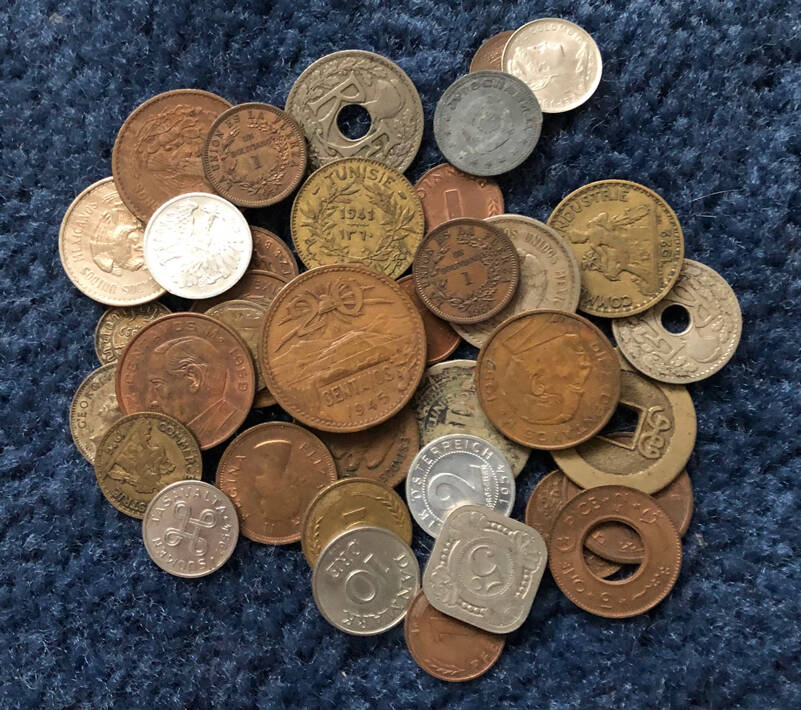By Morf Morford
Tacoma Daily Index
I’m not crazy about reality, but it’s still the only place to get a decent meal. – Groucho Marx
We have seen the dramatic, if not explosive, rise in value of cybercurrencies – and the equally dramatic collapse of the same – and similar non-tangible (or non-fungible, to use a popular term) investment vehicles.
In fact the term “investment vehicle” was abstract enough, but now NFTs and their many corollaries are on a variety of possible investment landscapes.
But many of us forget that the entire concept of money is inherently abstract – and that’s a good thing.
Or at least a necessary thing.
Before the institution of money, humans had a very basic system of barter – I would trade you what I have, for something you have that I want.
This system worked to a degree – but most objects weren’t very portable or divisible. Or durable.
You couldn’t put a sheep or a basket of eggs in a safe place or take it very far, or store it for a few months, so something had to be developed – and agreed upon – that represented the value of those tangible, usable items.
Something at least one step removed from an actual item was essential.
Here then is a (very) abbreviated history of how money came about.
To keep it simple, there are three levels or stages of money.
First came coins with intrinsic value (i.e. gold and silver coins).
Once upon a time, a dollar coin, for example was literally made from one dollar’s worth of silver.
A twenty dollar gold coin actually was composed of twenty dollar’s worth of gold.
Next came paper bills backed by precious metals (i.e. gold) being held by the governing body.
In the USA, Fort Knox traditionally held gold reserves to “back” all currency in circulation.
And finally, fiat currencies – paper bills not backed by a tangible good (as in gold or silver) but a promise (good faith) by a government.
As is all too painfully obvious, economies, as they get larger and more complicated, move away from the tangible and into the realm of the intangible.
We, at the same time, moved from a system that required no trust to one that fully relies on it.
Money shifted from being a thing OF value to a thing that REPRESENTS value.
Credit cards and checks were another step in this abstraction cycle – but at least with them, there was actual money somewhere, in a bank account or available at some time in the future.
Credit cards and checks, in their own way, made the gold reserves of Fort Know irrelevant.
When many of us have vast credit limits, or long term loans (as in mortgages) what does “full faith and credit” behind our currency really mean?
And then came cybercurrencies
Cybercurrencies are inherently abstract, with NO essential linkage or connection to any item with tangible, intrinsic value. There is value of course, but it is based on near-pure trust – no government or hard assets are anywhere in sight, or even implied.
Cybercurrencies can be based on a project in development, a creative enterprise on any scale from a single individual to a nascent tech company, and it could be in any category from gaming to music or art.
Cybercurrencies are abstract, but in a sense they are a variation of the original format of commerce – bartering. But instead of a cow or freshly picked produce, cash is used as leverage in a not-yet-developed idea or project.
What is money?
One example of how abstract money is, would be how much interest a kitten would have in a pile of cash or coins.
In the cat economy, if you can’t eat it or sleep on it, of what value is money?
In that sense, cyber-currencies are little, if at all different from cash – or even gold or silver.
A medium of exchange, almost by necessity, needs to be something inherently un-useful, something not eaten or used as a tool.
Its value is in what it represents – not what it is.
Cash and cyber-currencies are based, and hold or lose their value, based on trust and an agreed upon value. Some are just more officially recognized or widely accepted than others.
Money, perhaps like many things in life, only holds the value we ascribe to it.
*******
For more on cybercurrencies, check out the MIT Media Lab Cryptocurrency online short course here.
There are websites you can find to show you what to do if you’d like to set up your own cyber currency and invite others to invest in the potential of your personal values/vision. And if you want to track the real-time value of the top 200 cryptocurrencies, you can do that here – https://coinmarketcap.com/all/views/all/.





